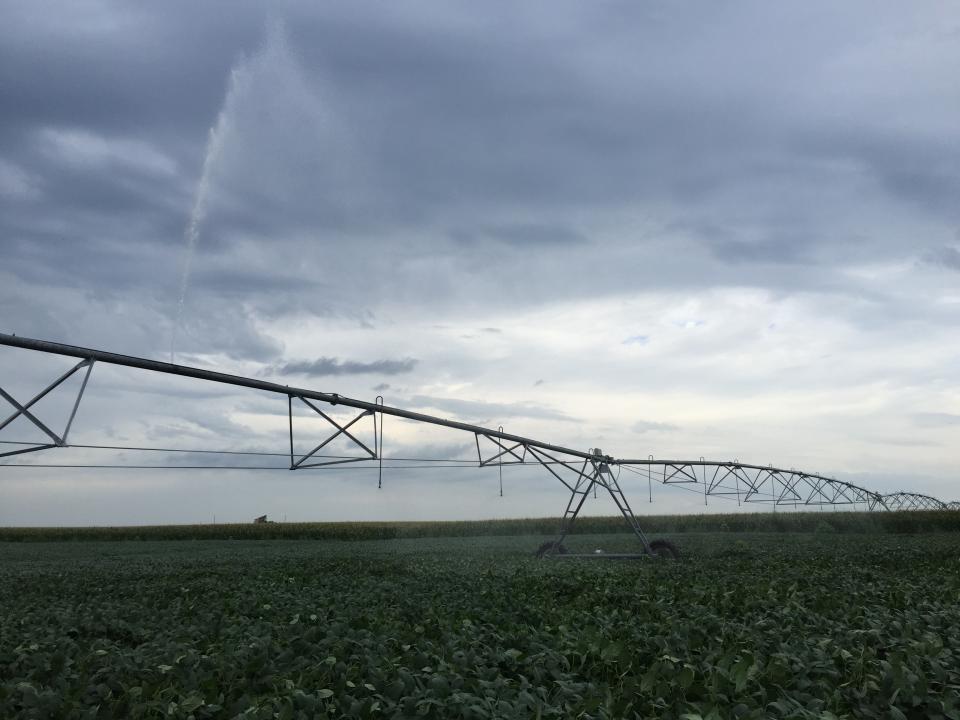Sprinkler Irrigation System Maintenance for Improved Uniformity and Application Efficiency

Center pivot irrigation systems are designed and managed to apply water as uniformly as possible to enhance crop production. Uniformity has a direct effect on the system’s overall application efficiency, which is a measure of how well an irrigation system delivers water to a crop’s root zone.
Poor water distribution can result in over- and under-irrigated areas. Insufficient irrigation can reduce total biomass, grain yield, and grain quality; whereas, excessive irrigation can cause runoff, soil erosion, deep percolation of water and nutrients, and anaerobic soil conditions (plant oxygen stress). Consequently, poor water distribution can have a negative effect on a farm’s net return as well as lead to potential environmental concerns (Rudnick and Irmak, 2015). Routine maintenance to improve and maintain high system uniformity and application efficiency is desired.
The primary source of low uniformity is faulty sprinkler nozzles as well as pressure differences along the system. Faulty sprinklers can be comprised of
- missing, clogged, and worn nozzles,
- stuck sprinklers, and
- out of sequence nozzle packages.
The broken gooseneck on this pivot, as shown in the video, is one cause of non-uniform water application. Walking the irrigation span to visually inspect it can help identify issues before crop yield is affected.
Pressure differences along the system can be attributed to elevation change and pipeline friction losses. When the sprinkler design flow rate varies by at least 10% for more than 15% of the system due to pressure differences, the use of pressure regulators is encouraged. The Nebraska Extension NebGuide G888, Flow Control Devices for Center Pivot Irrigation Systems, describes the working principles of pressure regulators and provides guidelines for selecting a regulator. When regulators stop functioning properly, due to a worn out diaphragm and/or spring, they no longer provide the desired constant outlet pressure, and consequently flow rate. One visual observation of a non-functioning regulator is when water is spraying out of the side of the regulator. If you have concerns that your regulators are approaching their usable life, contact your irrigation equipment dealer to have your regulators tested.
As described in the video, walking and visually observing an irrigation system when it is running often can help locate where there are mechanical causes for poor uniformity. In some cases, obvious or easily noticeable issues can be identified, such as the broken gooseneck shown in the video. However, other instances such as stuck sprinklers or clogged nozzles may be less noticeable, especially if the sprinklers are on drops in a tall crop canopy.
In a dry year, aerial imagery can be a useful tool to help identify systematic patterns (i.e., rings) within a field as a result of water stress from poor uniformity. However, in high rainfall areas (i.e., low irrigation requirements) aerial imagery may not be able to visually identify differences in the crop canopy. In these instances, it's recommended that catch cans be used to evaluate application uniformity. Evenly distribute cans of equal size across the system, measure the depth of water applied, and compare to identify areas of nonuniform water application.
To identify possible issues developing with pressure regulators and/or sprinklers record and observe your system’s flow rate and pressure over time, looking for changes.
For further information on irrigation management, visit the Agricultural Irrigation section of Water.unl.edu.
This article was reviewed by Rodrigo Werle, Chuck Burr, and Troy Ingram
Sign up for updates from UNL Water
